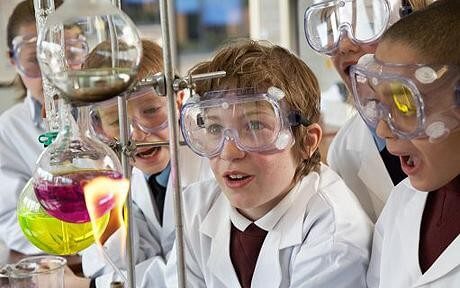A study aimed at improving engineering education in public schools found that only a dozen states clearly define and lay out engineering curricula for K-12 students in their science standards, and only four of these states present a “comprehensive” inclusion of engineering.
Researchers are trying to improve engineering education in public schools to address a national need for highly skilled engineers for the workforce.
“For me the real need is to have more diverse ways of thinking in engineering,” said Tamara Moore, an associate professor of engineering education at Purdue University. “One of the requirements of a good engineering team is to have people coming at a problem from lots of different directions. We need a more diverse population of engineers, but I also want people to be more engineering literate. I want all people to have an understanding of the importance of engineering in the fabric of our society.”
The researchers have created a framework that includes 12 indicators to define the ideal K-12 engineering education. They used the framework to assess state-level standards in science for all 50 states and also to new “Next Generation Science Standards” from the National Research Council of the National Academy of Sciences.
Findings were detailed in a research paper published in March in the Journal of Research in Science Teaching. The paper was authored by Moore; Kristina M. Tank, an assistant professor in Iowa State University’s School of Education; Aran W. Glancy, a doctoral student and research assistant at the University of Minnesota; and Jennifer A. Kersten, formerly at the University of Minnesota.
Of the 12 states that explicitly include engineering in their standards, four were comprehensive: Maine, Massachusetts, Minnesota and Oregon. Three were nearly comprehensive: New York, Pennsylvania and Washington. And five were non-comprehensive: Illinois, Indiana, Kansas, Oklahoma and Texas.
The framework elevates engineering design to the level of scientific inquiry within the academic standards and was described in a previous paper by the same authors published last year in the Journal of Pre-College Engineering Education Research.
“I am hoping people will use this as a way to look at curricula, as a way to look at whether or not engineering is taught meaningfully,” Moore said. “So much of engineering in K-12 focuses on tinkering with stuff, figuring out how a toy works, for example. What is needed is a more plan-full way of thinking of it, a more analytical approach that asks how an engineer would solve a problem and then teaches science and mathematical thinking through engineering.”
For example, when teaching the subject of heat transfer to sixth-graders, the conventional “inquiry-based approach” might ask students to examine how objects or materials melt and to measure the rate of heating in different materials.
“But an engineering, design-based approach might say, ‘let’s create a design feature to help keep this penguin-shaped ice cube from melting,'” she said. “Or, ‘does sticking a Mylar sheet between my hand and a hot light bulb reduce the heating on my hand?'”
The research is now being used in a curriculum-development project called EngrTEAMS: Engineering to Transform the Education of Analysis, Measurement and Science, an $8 million National Science Foundation-funded research project.
The researchers are working with 200 teachers in Saint Paul, Minnesota, and surrounding suburbs, to introduce the approach for 15,000 students in fourth through eighth grades. The project began in 2012 and includes professional-development workshops for teachers in the school districts.
“We bring in about 50 teachers a year, so we’ve got about 100 teachers involved at this point,” Moore said. “They then pilot it in summer in STEM camp with students who just come for fun. Then they do the whole unit in their classroom during the school year and we observe.”
The districts span highly diverse, urban populations, to far less diverse rural schools.
“We want to see whether this works no matter which population we are looking at,” she said.


The use of engineering models of various kinds to encourage students in mathematics is surely not a new subject and there must be a long list of simple devices that are possible to achieve this. The reverse, of using the mathematics to encourage engineering students seems to me to be less likely, because I and many others find engineering matters to be very interesting by themselves. So what is missing in the K-12 is simply engineering and the maths part is a bonus not a criterion.
I have to say I am fully intrigued by this approach. As a math/science teacher I have relied heavily on the inquiry approach. I look forward to hearing more about your work and the impact it has on the students and their understanding of, and attitudes towards, engineering.